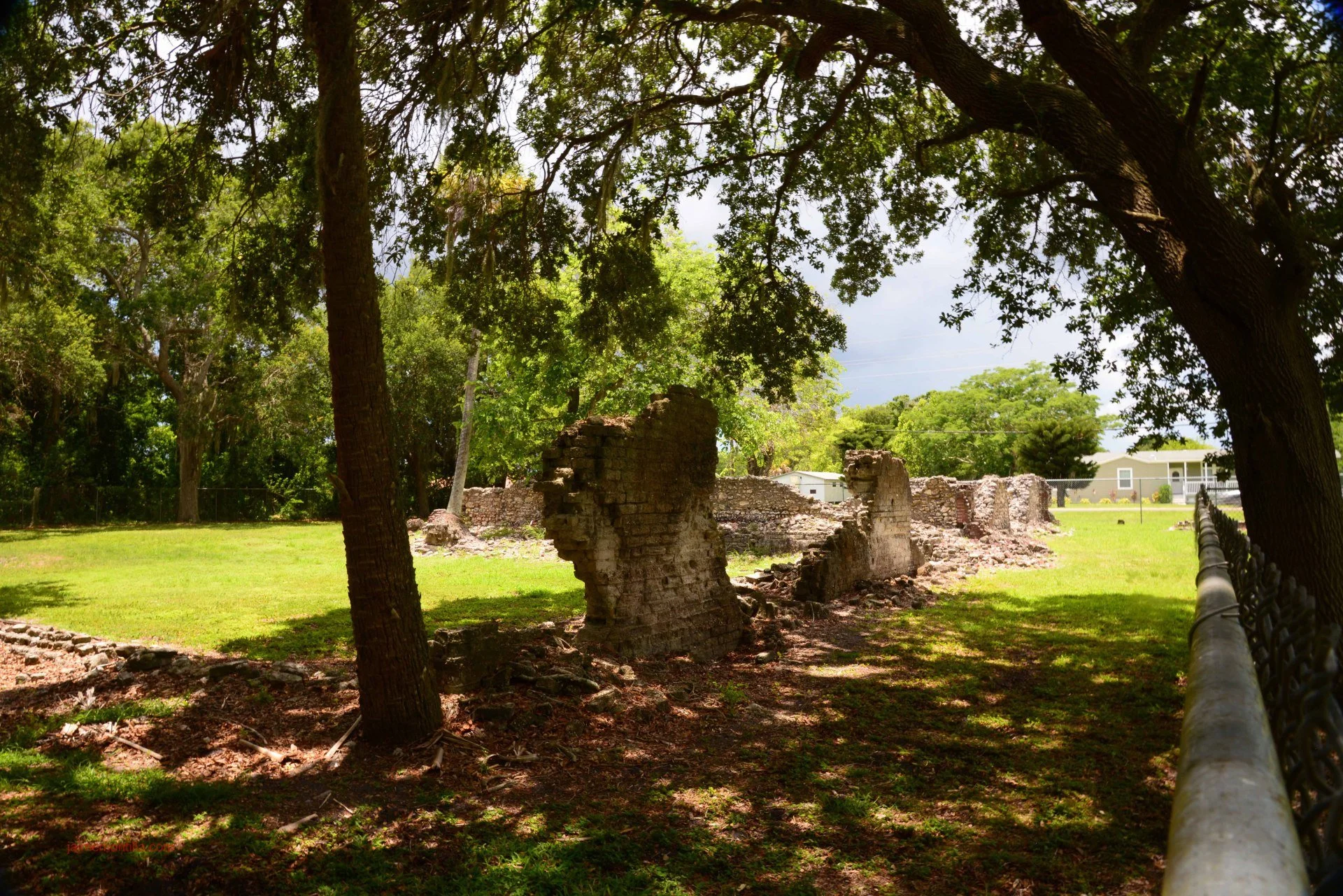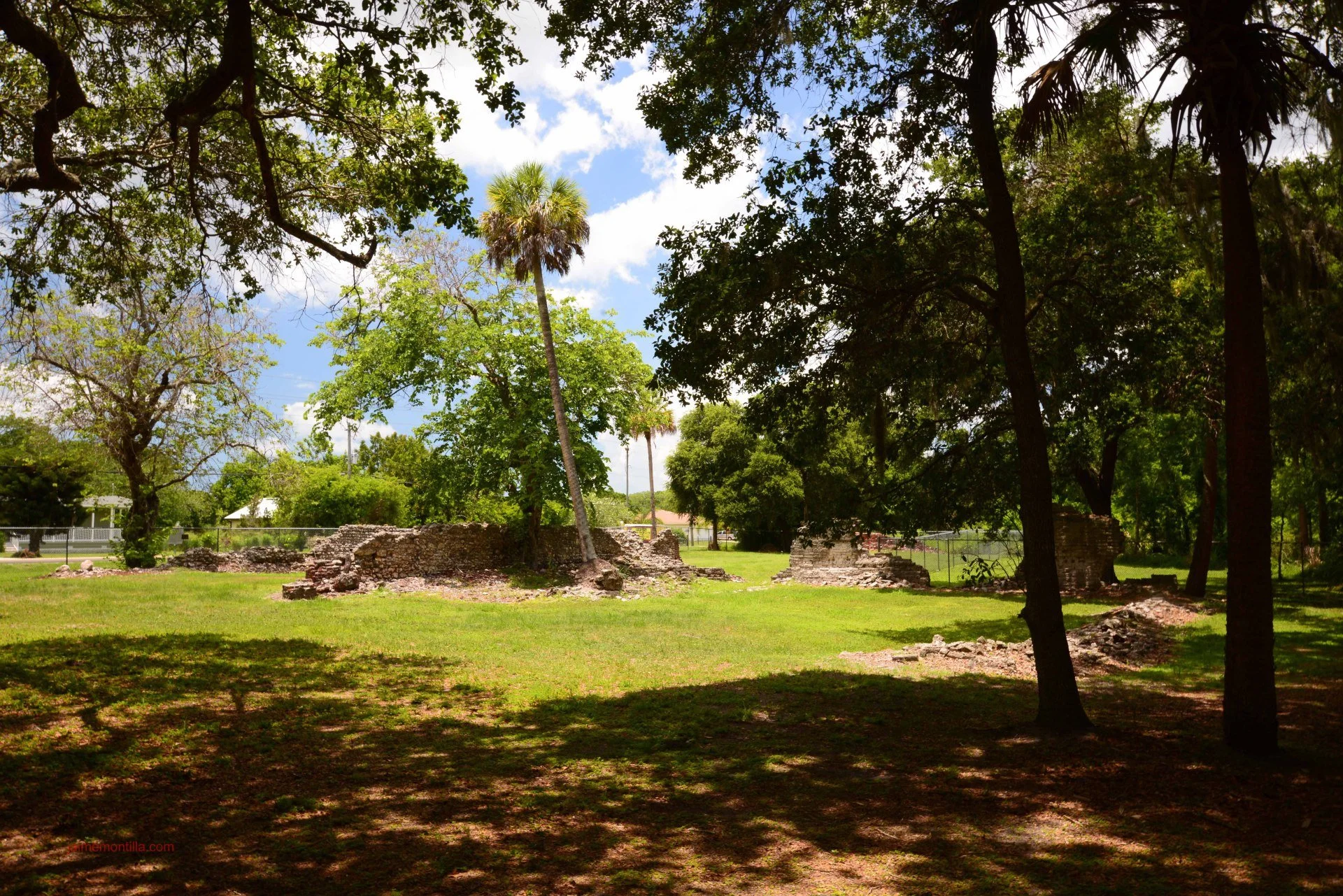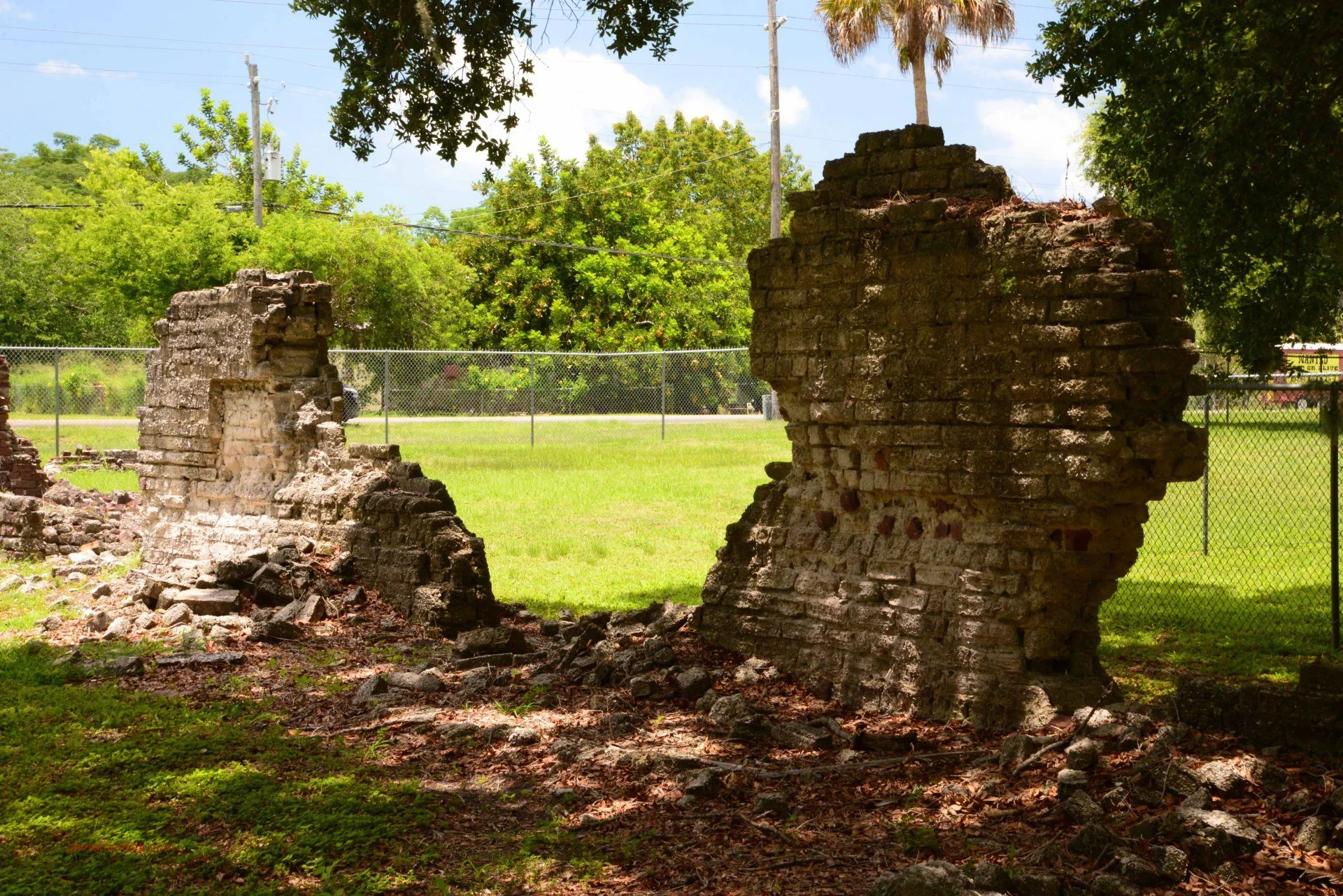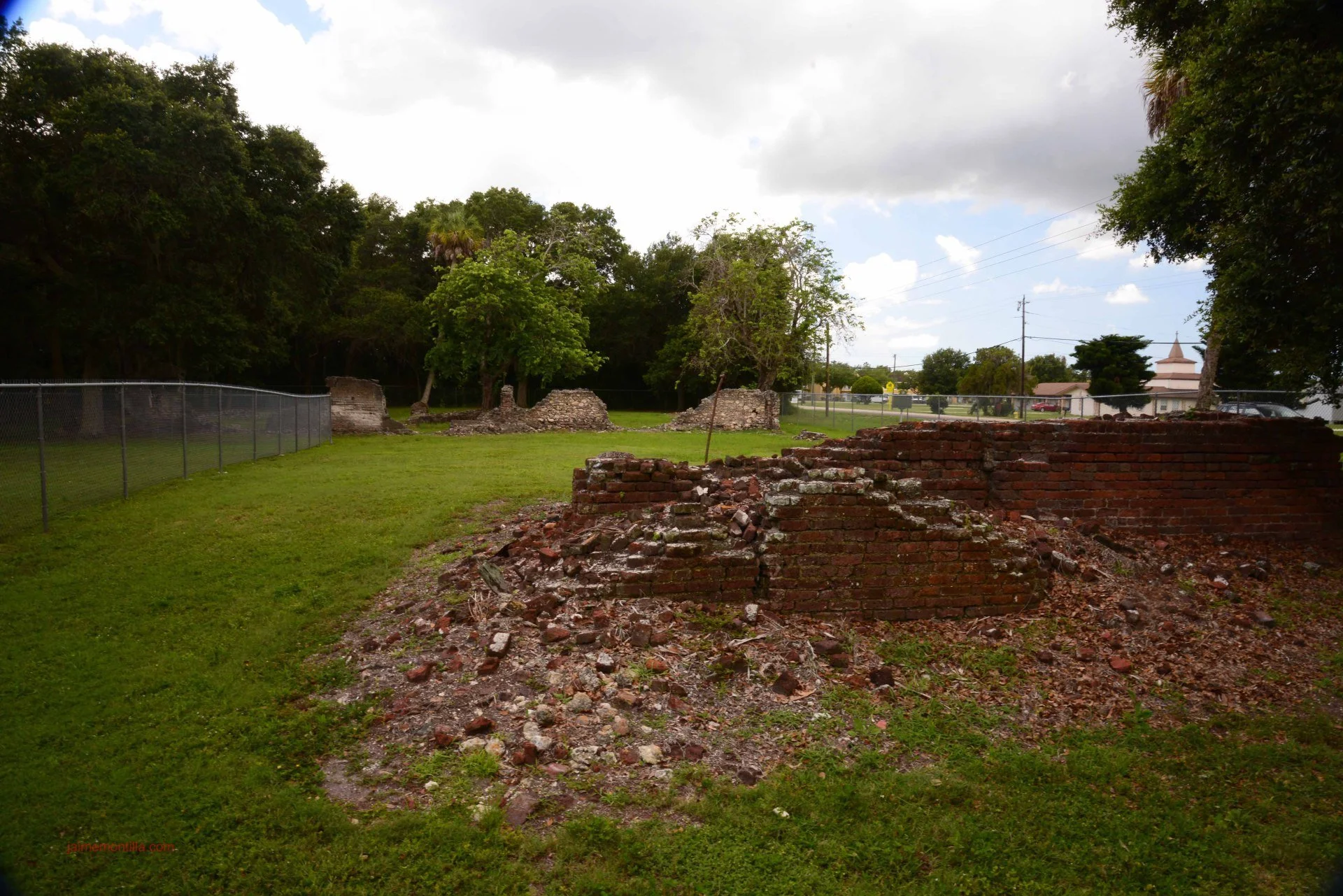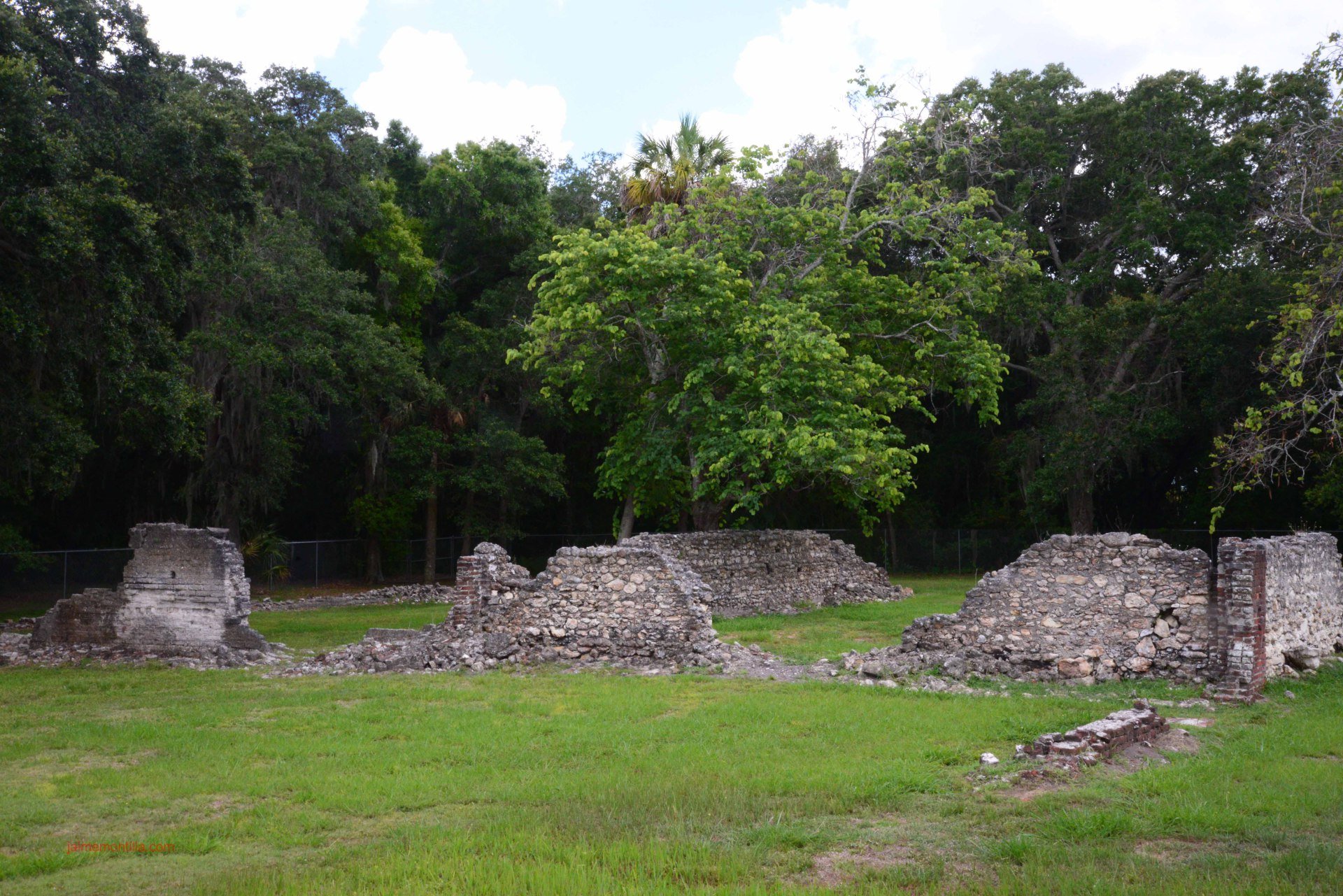
Gamble Plantation and Sugar Mill
Shortly after the end of the Second Seminole War (1835-1842), permanently extinguishing the Seminole threat was a major concern. One way considered as a feasible solution to the problem was to encourage immigration by white families to newly established settlements South and East of the Suwanee River, realizing that the citizen-soldier would provide an effective force in suppressing Indian uprisings. The Armed Occupation Act passed in 1842, was considered by some as the country's first homestead act and by others as a bounty law offering land to those who would settle along in the new Florida frontier.
One of the areas first settled as a result of the Act was along the Manatee River. Although cotton was an important cash crop during the antebellum period in Florida, poor cotton prices during the 1840s prompted planters to look for more profitable crops, one of them being sugar. Confederate Army Major Robert Gamble's previous experience with sugarcane on his family plantations in the Tallahassee area, no doubt led him to search for lands suitable for the cultivation of this staple.
Major Gamble and sugar planters Hector Wright Braden and Joseph A. Braden, William Craig and William Wyatt soon located along the Manatee River valley and by 1845 a dozen plantations were producing sugar for the New Orleans market. By 1850 Major Gamble's plantation included over 3,000 acres of land, 100 slaves and a sugar mill with the best sugar processing machinery then available in the South. During the 1840's and early 1850's, Gamble was the leading producer of sugar and molasses in Florida.
The plantation included 3,500 acres, numerous outbuildings, slave quarters, and wharf from which sugar and molasses were shipped by schooner and steamboat. The Gamble Mansion, the last surviving plantation home in South Florida on the grounds of the Gamble Plantation, was built between 1845-1850 and is an example of antebellum construction.
The 1850s was a period when the price of sugar fluctuated dramatically, reaching a low of 3.5 cents per pound in 1853 from a previous average of 7 cents a pound. Production costs for most planters including Gamble was between 4 and 6 cents per pound, making it impossible to survive the low prices. Gamble left the plantation in the spring of 1856, when it was placed in the hands of his principal creditor, his brother-in-law Allan Macfarlan.
On December 18, 1858, steadily mounting debts finally forced the plantation to be sold to Louisiana planters John Calvin Cofield and Robert McGroyson Davis for the sum of $190,000. Included in the sale were 3,450 acres of land, 185 slaves and "all the mules, oxen, cattle, wagons, carts, and farming utensils of every description on or pertaining to the Manatee plantation". Major Gamble returned to Tallahassee where he married Laura Wirt Randall, the daughter of Judge Thomas Randall where he lived until his death in 1906.
With the outbreak of the Civil War, the then owners terminated their sugar processing operation and after selling most of the slaves and machinery, abandoned the plantation. Union raiders destroyed the Gamble sugar mill in 1864. During the Civil War, the mansion was the home of Captain Archibald McNeill, famous Confederate blockade-runner. Judah P. Benjamin, Confederate Secretary of State, took refuge here during May 1865 while making his escape from Federal troops following defeat of the Confederacy.
Major George Patten came to Manatee County after losing his home and cotton business in Savannah, Georgia during the Civil War. In 1872 he purchased the Gamble Mansion and approximately 3,500 acres of land at public auction for $3,000 but the sugar mill was not restored to operation at this or any subsequent time. Patten, built a wooden, two-story vernacular Victorian style house for his living quarters because the mansion's condition was unfit for occupancy. Patten platted the land and gave each of his 13 children a lot naming the resulting small settlement Ellenton in honor of his daughter Ellen.
The Judah P. Benjamin Chapter of the United Daughters of the Confederacy rescued the mansion from decay in 1923.
